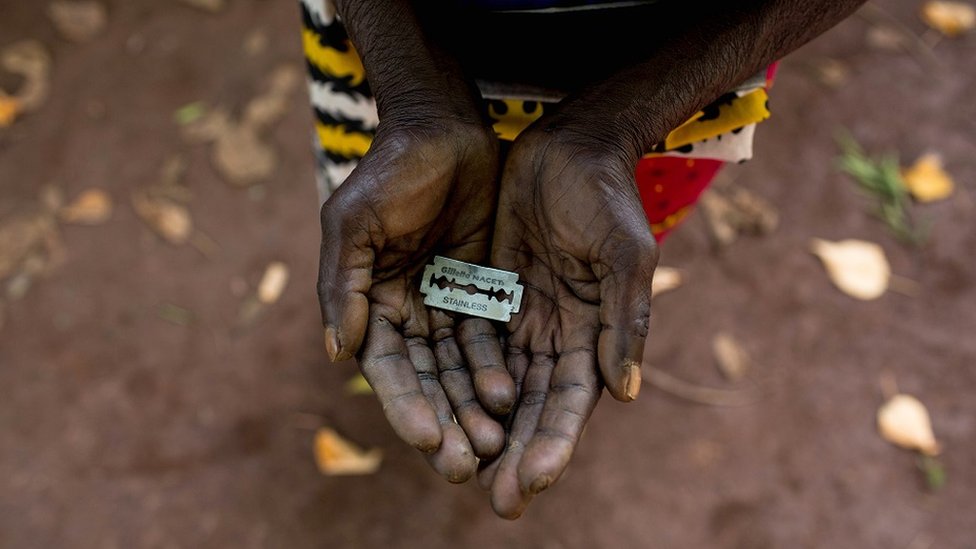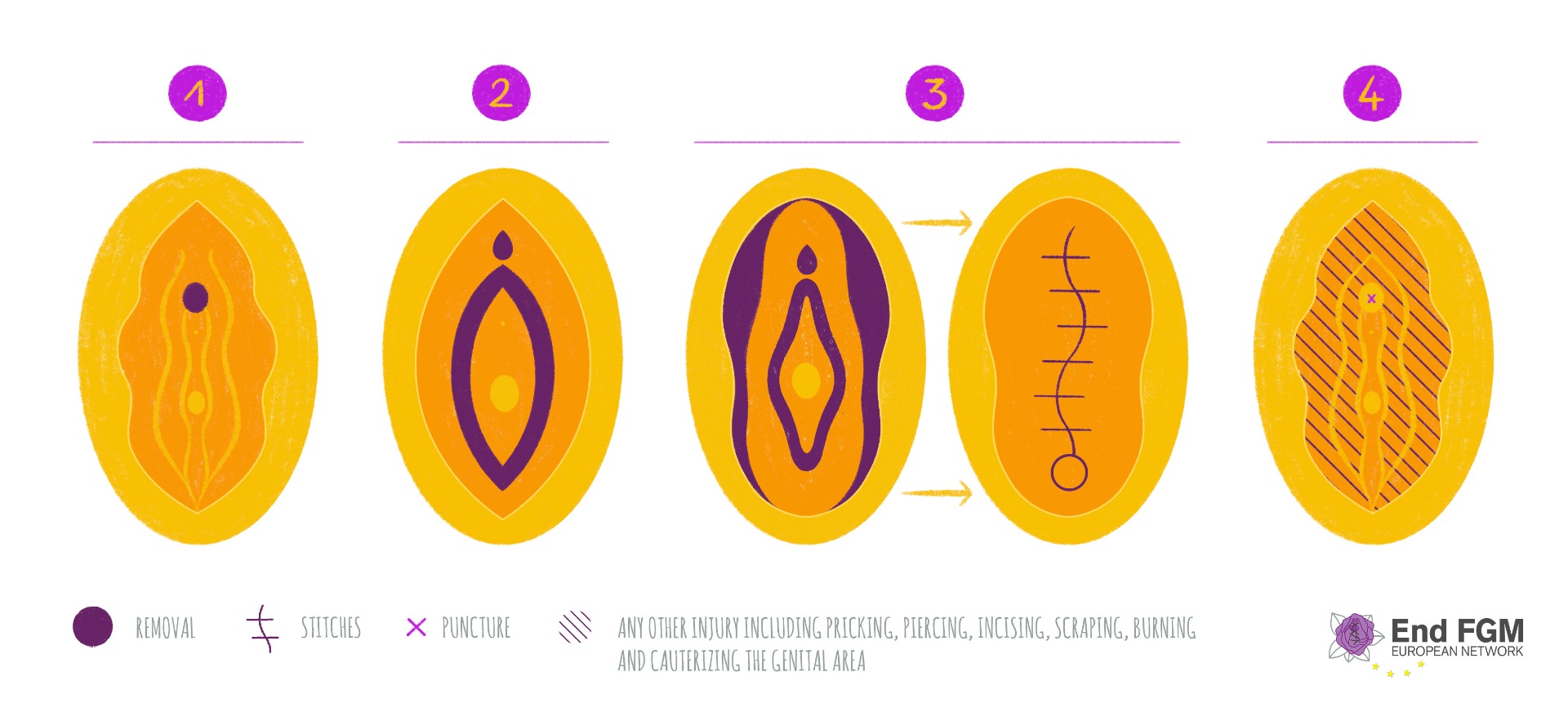Female Genital Mutilation: Forcefully Removing Female Genitals
“Hello there! I’m here to provide you with a bit of information on what female genital mutilation is, its various facets, and the Indian laws relevant to this abuse. What you, as a survivor, are experiencing, post confronting a traumatic experience is normal. What you, as a bystander, are going through while supporting a survivor is absolutely okay and typical too! If you need additional resources or just someone to talk to, feel free to reach out to The Neeti Project."
What is Female Genital Mutilation?
The World Health Organizations states that Female genital mutilation (also known as FGM) includes procedures that involve partial or the total removal of external female genitalia or injury to the female genital organs for non-medical reasons. It is often performed by traditional practitioners like midwives, healers, naturopaths, etc. (Female Genital Mutilation, 2022).
Are There Different Types of Female Genital Mutilation?
YES.
1. Type I: Involves partial or total removal of the clitoral glans (external and visible part of the female genitalia) and clitoral hood (skin that covers the clitoris).
2. Type II: Involves the partial or total removal of the clitoris glans and the labia minora (the inner region of the vulva) or without the removal of labia majora (outer region of the vulva).
3. Type III: This type is called infibulation (narrow opening of the vagina that forms a covering seal). This seal is formed by cutting and repositioning the labia major and labia minor or sometimes it is stitched.
4. Type IV: This type involves all other harmful procedures like pricking, piercing, incising, scraping, and cauterizing the genital area.
Female genital mutilation is regarded as a violation of human rights against girls and women. It is often exercised on young girls from birth to 15 yeas of age. The deep-rooted cause of this violation is because of inequality between sexes, leading to discrimination against women (Female Genital Mutilation, 2022).
Are there Any Risk Factors for the Person who has Undergone Female Genital Mutilation?
Female Genital Mutilation leads to no benefits. It is harmful for girls and women, since it involves the removal of healthy and normal genital tissue. It affects the natural functions and functioning of girls and women.
Immediate complications:1. Pain
2. Excessive bleeding (hemorrhage)
3. Genital tissue swelling
4. Fever
5. Urinary tract infections
6. Wounds
7. Shock
8. Death
Long-term complications:
1. Vaginal problems
2. Menstrual issues
3. Sexual problems
4. Need for surgeries to narrow or seal the vaginal problems.
5. Psychological issues: anxiety, depression, PTSD.
What is the History behind Female genital Mutilation?
The history behind female genital mutilation appears vague. The origin of this tradition is still unknown. However, the first practice, dates to 2000 years ago. It is believed that FGM began when African slave women entered Arab countries and was also practiced in sub-Saharan Africa. The practice is also supported by traditional beliefs, values, and attitudes. In Islam, the practice is termed as Khatna, Khafz, or Khafd, where the clitoral hood is removed from 6–7-year-old girls amongst certain Muslim communities. Kenya and Sierra Leone value FGM as a rite of passage to womanhood. Sudan, Egypt, and Somalia view FGM as a means of preserving a girl’s virginity and honor. The Romans performed a technique involving slipping of rings through the labia majora of female slaves to prevent them from becoming pregnant and the Scoptsi sect in Russia performed FGM to ensure virginity.
Overall , female genital mutilation was believed to ensure women’s virginity and a reduction in female sexual desire - a biological, social, and psychological phenomena that is considered forbidden and "honor-bound" due to cultural stigma, stereotypes, and attitudes (FGM National Clinical Group - Historical & Cultural, n.d) (Wikipedia contributors, 2022).
2. Spread awareness, including men.
3. Increase advocacy for the issue.
4. Create a toolkit to help people understand the signs and symptoms of FGM.
5. Inculcating health and sex education in schools (Five Ways to Help End FGM/C, 2021).
Sahiyo is a non-governmental organization that works towards ending female genital mutilation in India as well as other countries in Asia. Their objectives are:
- To bring an end to the practice of female genital cutting (also known as female genital mutilation or female circumcision), which has been recognized as a human rights violation by the World Health Organization, United Nations Populations Fund (UNFPA) and United Nations Children’s Fund (UNICEF).
- To enable a culture where a woman/girl’s body and female sexuality is not feared or suppressed, but embraced as normal.
- To recognize and emphasize the values of consent and a child/woman’s right over her own body.
- No proper law has been passed to protect women against FGM. However, there have been legal proceedings in the supreme court that want to raise a ban on this harmful procedure that inflicts pain and harm.
- However, the sections that FGM may fall under are section 319 to 326 of the Indian Penal Code.
- These sections provide provisions for inflicting hurt and grievous hurt on an individual.
- ‘Hurt’ must constitute the elements of causing bodily pain, infirmity or disease to another person.
- There are seven specific types of ‘grievous hurt’ including:
- “Any hurt which risks one's life or
- which causes the victim to be in severe bodily pain for twenty days or
- causes the person to be unable to follow ordinary pursuits.”
- Section 4 of protection of children for sexual offences act, criminalizes the offence of penetrative sexual assault inflicted on children below the age of 18 years (Chugh, 2020).
Bureau of Statistics,
work unit of the Policy Integration Department.
(n.d.). Retrieved September 27, 2022, from https://www.ilo.org/public/english/bureau/stat/isco/isco88/3241.htm
Cantera, M. A. L. (2020). “I was crying with unbearable pain”: study reveals extent of
FGM in India. The Guardian. Retrieved October 2, 2022, from
https://www.theguardian.com/global-development/2018/mar/06/study-reveals-fgm-india-female-genital-mutilation
Chugh, S. (2020). It's Time to Ban Female Genital Mutilation in India: Here's
Why. Academike. Retrieved October 2, 2022, from
https://www.lawctopus.com/academike/ban-fgm-in-india/
Female genital
mutilation. (2022). Retrieved September
27, 2022, from
https://www.who.int/news-room/fact-sheets/detail/female-genital-mutilation
FGM National Clinical
Group - Historical & Cultural. (n.d.).
Retrieved October 2, 2022, from
http://www.fgmnationalgroup.org/historical_and_cultural.htm#:%7E:text=The%20history%20of%20FGM%20is,of%20distinction%20amongst%20the%20aristocracy.
FIVE Ways to help End FGM/C. (2021). The Global Goals.
Retrieved October 3, 2022, from
https://www.globalgoals.org/news/five-ways-to-help-end-fgm/
Wikipedia contributors.
(2022). Female genital mutilation in India. Wikipedia.
Retrieved October 2, 2022, from
https://en.wikipedia.org/wiki/Female_genital_mutilation_in_India#:%7E:text=Occurrence,-Further%20information%3A%20Dawoodi&text=FGM%20is%20practised%20by%20the,removal%20of%20the%20clitoral%20hood.


Comments
Post a Comment